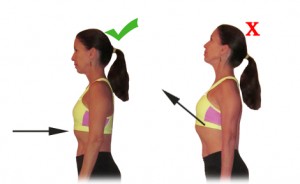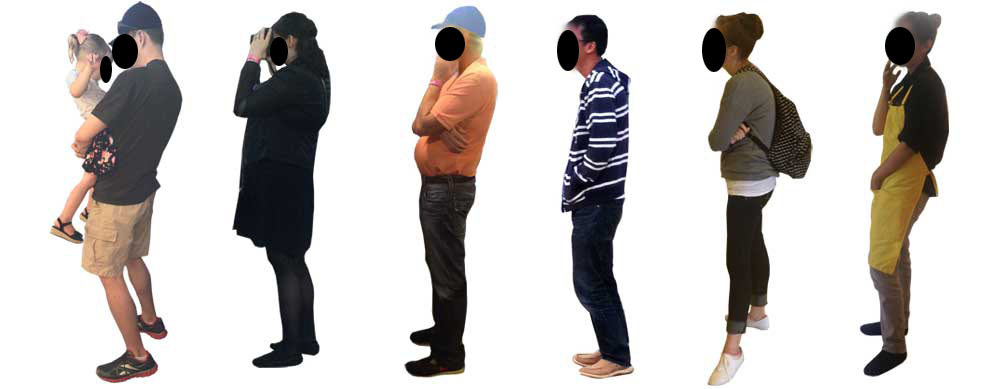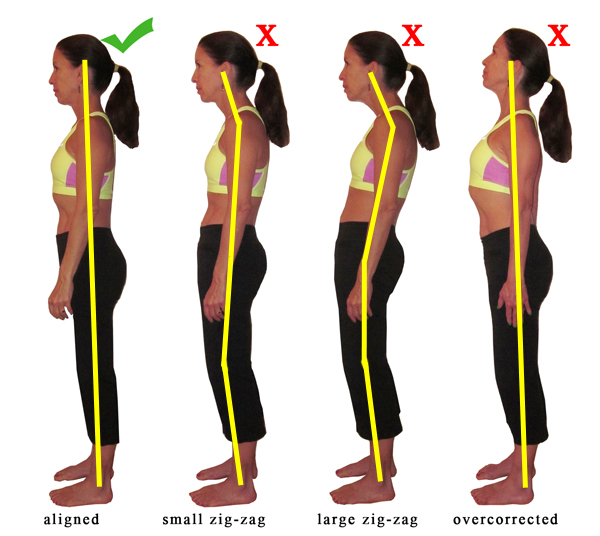Posture Tips: Standing
In an aligned body, the ankle, knee, hip, and shoulder should be directly stacked on top of each other. A vertical line could be drawn through all weight bearing joints forming a central axis that divides the body nearly exactly in half. With the weight bearing joints stacked, the bones are doing their primary job – holding you up. The muscles are free to relax and do not become achy after sitting or standing for long periods of time.
As a culture, we tend to over-exaggerate the curves of the back. One very common phenomenon is to push the pelvis forward causing the legs to slant. When we no longer stack the legs like a vertical column of support we are forced to assume a zig-zag shape in order to counter-balance the effect. If the pelvis is pushed forward it causes the low back to arch. The exaggerated curve in the low back must be counter-balanced by hunched shoulders and a forward head. Extreme forward head position is especially common in tech workers and teens, who spend a great deal of time on the computer.
The woman above is a physical therapist and a Pilates instructor (find out more at Pilates with Teresa). The far left photo is her natural standing posture. Her weight bearing joints are stacked and she has a quality of relaxation. In the middle left she is demonstrating the typical Westernized zig-zag posture. In the middle right photo her zig-zag is even more exaggerated. In the far right photo she is showing the overly tense position that many people associate with good posture. Notice that the weight bearing joints are stacked, but the majority of her weight is in front of the yellow line. She is arching and there is a great deal of tension in her neck and back.

This baby has her weight bearing joints stacked. There is a relaxed quality of lengthening through the crown of the head.
Toddlers usually have excellent alignment as they are first learning to walk because it is balanced and natural. The baby to the left has her weight bearing joints stacked, her shoulders are open (even though she is reaching forward), her neck is long and her chin tilts down slightly.
Here are a few quick tips to help you maintain healthy standing posture:
1. Hips over ankles – A simple trick to make sure that you aren’t angling your legs forward is to look at your ankles. This makes you shift the pelvis back.
2. Elongate – Gently press your feet into the ground and you subtly extend the crown of your head upwards. You don’t want to cause tension in the body by over-stretching the spine, just set the intention to gently elongate in both directions. Remember, relaxation is the name of the game.
3. Relax the head and neck – Lengthen the crown of the head toward the sky while releasing the muscles of the neck. With the neck long and relaxed, the chin is free to angle slightly downwards. You will find that you do not require neck and shoulder muscles to hold your head up because it will be perfectly balanced. If your neck jets forward you will have a kink in the back of your neck and your muscles will need to be engaged to hold your head in place.

Be careful that you are not puffing out the chest. This causes a strain on your neck, shoulders and low back.
4. Shoulders open – The goal is to get your shoulders to open, not necessarily to go back. Instead of pinching the shoulder blades, do a few shoulder rolls backwards one side at a time. Roll the shoulder forward, up, back and down. Then just relax. Take a few deep breaths and imagine your shoulders getting farther apart with each exhale. Try to make your upper back wider.
5. Ribs down – But remember that open shoulders do not mean flaring the lower ribs. Since the goal of good posture is relaxation, you want to find a comfortable and restful position for the chest. Allow the lower ribs to come down into the body so that the rib cage is not angling backwards. You will immediately feel a straightening of the lower back.


